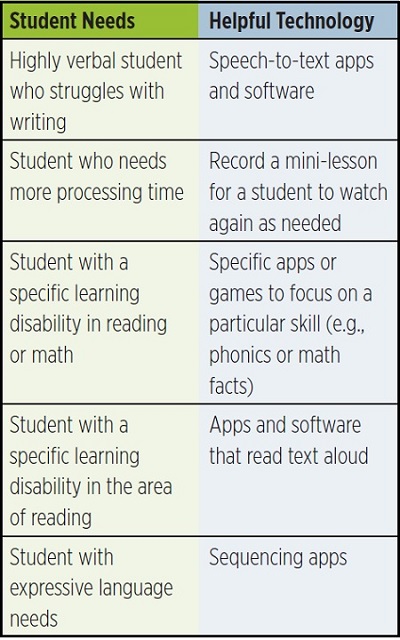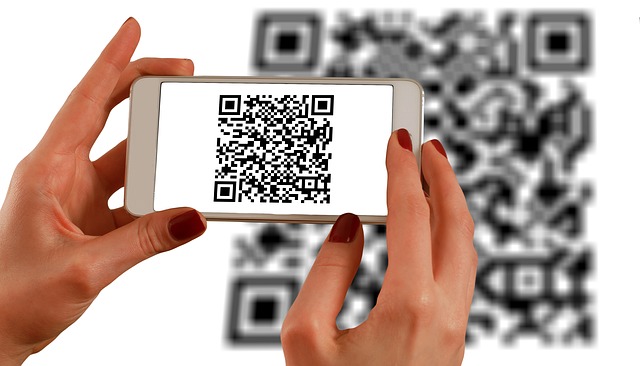Turning Tears Into Joy

How can a teacher help a third grader go from crying daily during writing time in September to happily publishing more than her peers in January? Simply by giving her access to the instructional technology she needs.
This particular student has an Individualized Education Plan (IEP) focusing on the behaviors and emotional characteristics of autism, and her teachers found that providing her with a tablet and keyboard removed the anxiety that writing by hand caused her. While access to the tablet was the first step, it didn’t end there. Her teachers also designed lessons that integrated the technology purposefully. As a result, she was not only able but eager to share her work with her classmates.
Had this technology not been available, her teachers, her family, and the child herself might never have known her true abilities as a writer. Technology has the power to help unleash the academic and social potential of students enrolled in special education programs, and this holds true for children with a variety of disabilities.
Students with special needs don’t need remedial school experiences; rather, they need instruction that is accessible and purposeful. Technology can enable students to work through parts of the learning process that are particularly challenging for them. The right tools can also help make content more accessible by allowing them to learn through their strengths. These students have many gifts to share with their classroom community, but many of them don’t have a way to contribute in a format that utilizes their strengths. Technology gives students with IEPs multiple paths to reach a goal, as opposed to just one. In addition, students often exhibit increased agency and confidence as a result of using these tools because they need less assistance from a teacher.
For educators new to integrating technology to serve the needs of students with IEPs, here are some simple yet powerful ways to maximize student learning:
These instructional and assistive technologies are often underutilized, and their impact on students cannot be underestimated. Also, since these examples of technologies that can be helpful are not difficult to learn or intimidating, they provide a good jumping-off point for educators new to technology integration.

When teachers and students share how they’re using various devices and programs as tools for transformative learning, they help members of the education community and beyond to see what is possible. If you want to make a case to the administration in your school or district or share with your colleagues about the powerful ways effective technology integration can support the academic success of students with IEPs, here are some talking points:
Tools and ideas to transform education. Sign up below.
■ Technology can promote student agency.
■ When used purposefully, technology integration helps students to learn how to problem-solve.
■ Technology enables teachers to provide more interactive, graphic, and sensory supports.
■ Project-based learning helps students to cultivate creativity.
Ultimately, the academic success of students with special needs can be realized on a whole new level when effective technology integration becomes part of the story.
Ashley Painter is a teacher at Sandburg Elementary in Madison (WI) and a collaborative instructional technology leader in the Madison Metropolitan School District. Jackie Moreno is a bilingual instructional coach and library media technology specialist at Sandburg Elementary in Madison (WI).
SOUND SYSTEM MINIMIZES DISTRACTIONS IN KINDERGARTEN CLASS
For 17 years, Heidi Solivan has struggled to grab and hold the attention of her 25-plus kindergarteners at Foxborough Regional Charter School (FRCS) in Foxborough (MA), a group including English language learners, special education students, kids with hearing loss, and students suffering from attention difficulties. In 2014, the school purchased a Lightspeed Redcat system, which combines a microphone that the teacher wears on a lanyard with a speaker that can be placed anywhere in the classroom. For the first time, Solivan’s students could hear whatever she said, no matter where she was in the room.
“My first reaction after using it was, ‘This is awesome!’” remembers Solivan. “This system allowed me to teach in a more natural tone of voice, and I didn’t need to strain or raise my voice because they’re all able to hear me clearly.”
Solivan has found the sound system especially helpful to keep SPED students engaged in lessons, and for ELLs are now able to hear every sound and syllable the teacher makes. She has the freedom to move around the classroom, and her kindergarteners are no longer unruly because they can’t hear or understand her. Students also use the system when reading out loud to the class. They like using the microphone because they love to hear themselves through the speaker.
An extensive kickstarter campaign to purchase more sound systems made its way to the Rachael Ray Show, which surprised Solivan with systems for each kindergarten class at FRCS.
